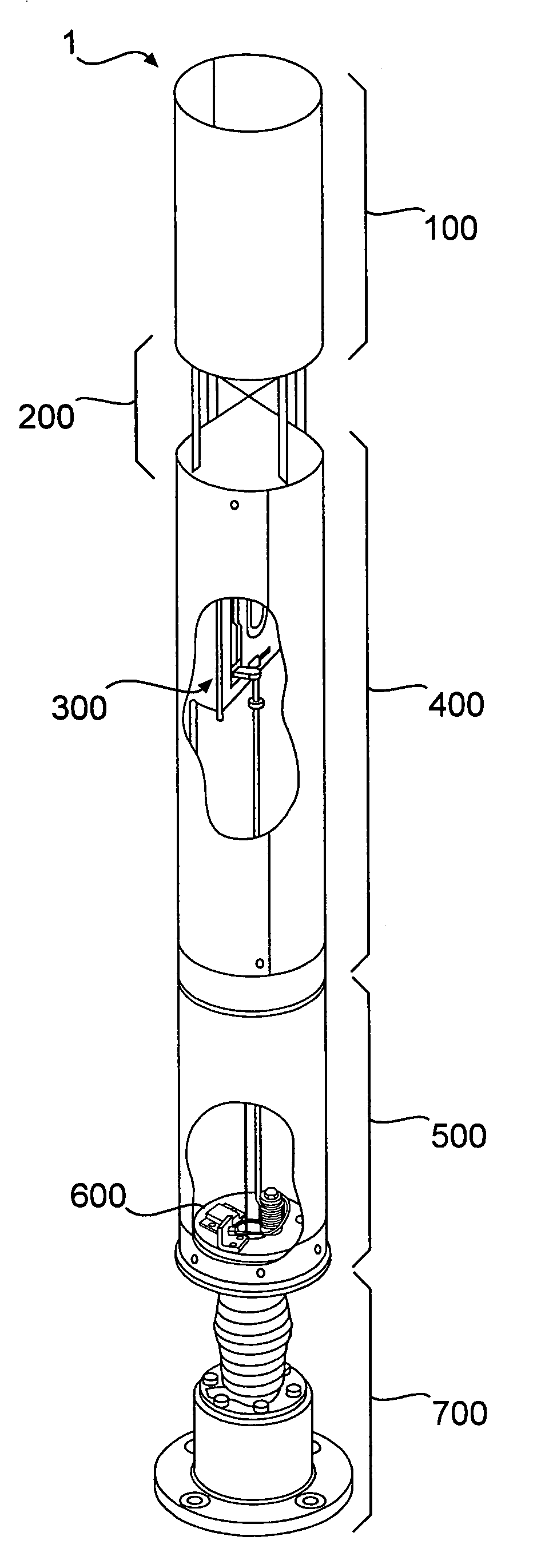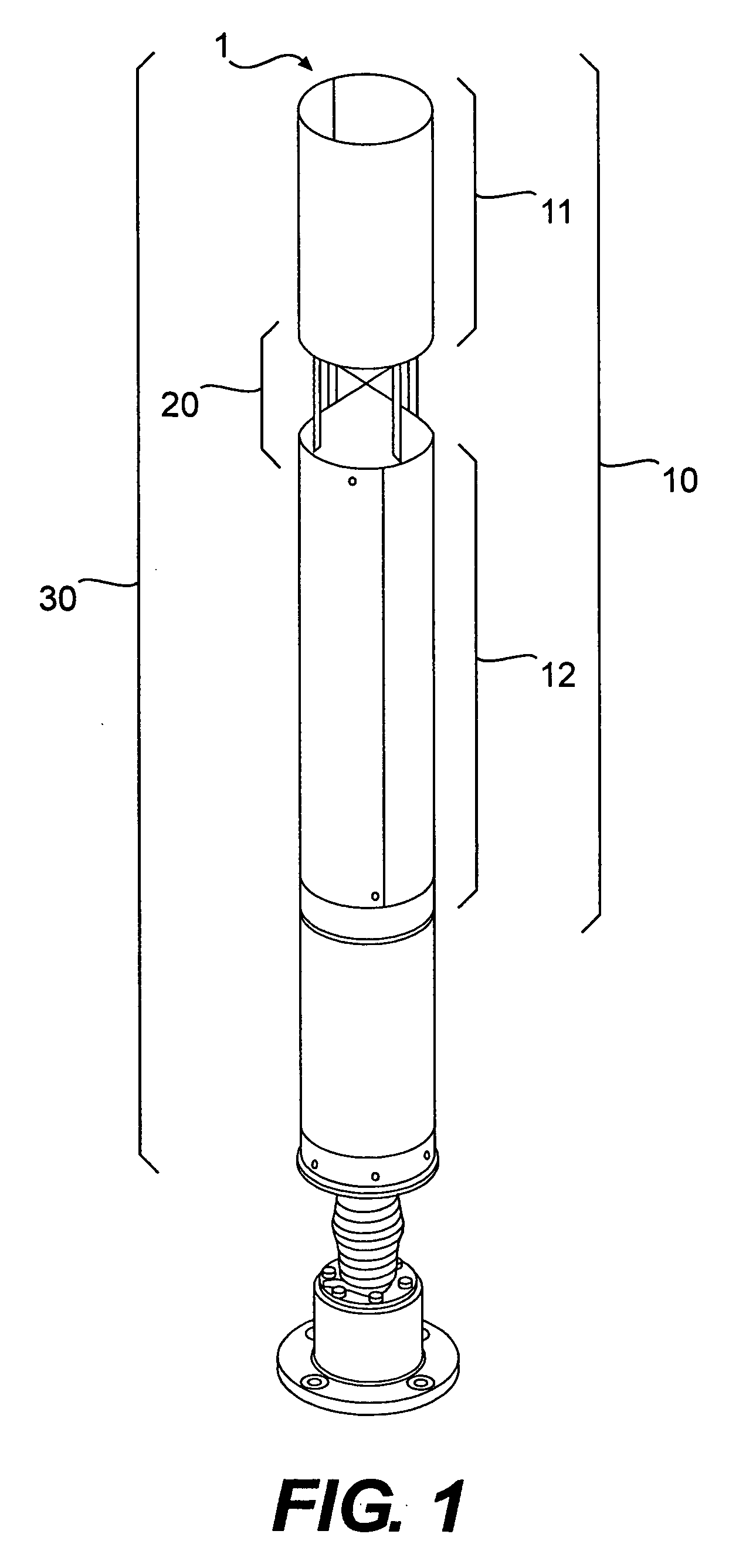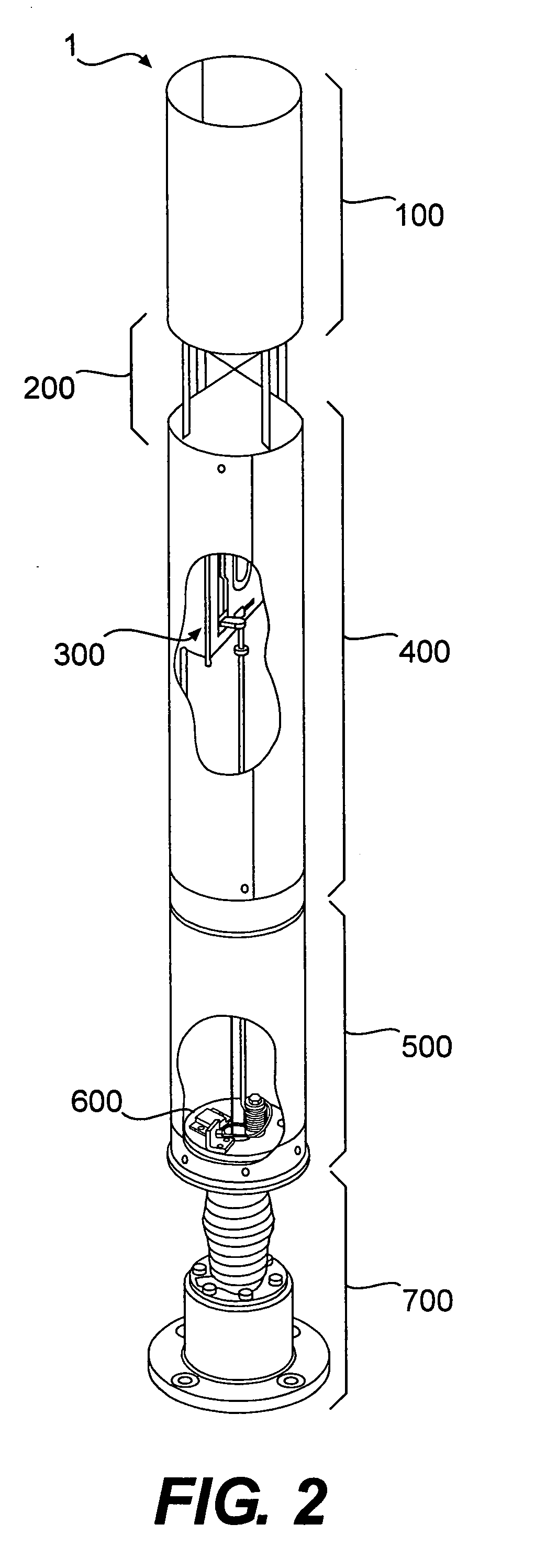Ultra-broadband antenna system combining an asymmetrical dipole and a biconical dipole to form a monopole
a technology of monopoly and dipole, applied in the direction of resonant antennas, separate antenna unit combinations, elongated active elements, etc., can solve the problems of less desirable gain characteristics of narrow-band antennas, device occupying more space at the point of attachment, and limiting the usefulness of narrow-band antennas to a relatively narrow band of frequencies. , to achieve the effect of minimizing inferen
- Summary
- Abstract
- Description
- Claims
- Application Information
AI Technical Summary
Benefits of technology
Problems solved by technology
Method used
Image
Examples
Embodiment Construction
[0063] Referring now to FIG. 1, a preferred embodiment of the present invention is shown as ultra-broadband antenna system 1. Ultra-broadband antenna system 1 preferably comprises asymmetrical dipole element 10 and biconical dipole element 20, which together combine to form monopole element 30. Asymmetrical dipole element 10 further comprises upper asymmetrical dipole element 11 and lower asymmetrical dipole element 12. FIG. 1 diagrams the functionality of components of the ultra-broadband antenna system of the present invention.
[0064] Referring now to FIG. 2 showing the major component sub-systems of the present invention, ultra-broadband antenna system 1 preferably comprises upper cylinder 100, cone / rod sub-assembly 200, balun sub-assembly 300, lower cylinder 400, canister sub-assembly 500, choke sub-assembly 600, and spring / base sub-assembly 700.
[0065] Referring now to FIG. 3, the major component sub-systems of the present invention 1 preferably are connected to each other as f...
PUM
 Login to View More
Login to View More Abstract
Description
Claims
Application Information
 Login to View More
Login to View More - R&D
- Intellectual Property
- Life Sciences
- Materials
- Tech Scout
- Unparalleled Data Quality
- Higher Quality Content
- 60% Fewer Hallucinations
Browse by: Latest US Patents, China's latest patents, Technical Efficacy Thesaurus, Application Domain, Technology Topic, Popular Technical Reports.
© 2025 PatSnap. All rights reserved.Legal|Privacy policy|Modern Slavery Act Transparency Statement|Sitemap|About US| Contact US: help@patsnap.com



